How does the Lexus RZ fare in the real world? We put the electric SUV through its paces
The Lexus RZ gives us its all on the roads of the UK, as we experience the premium-brand's high-end EV in its natural urban habitat
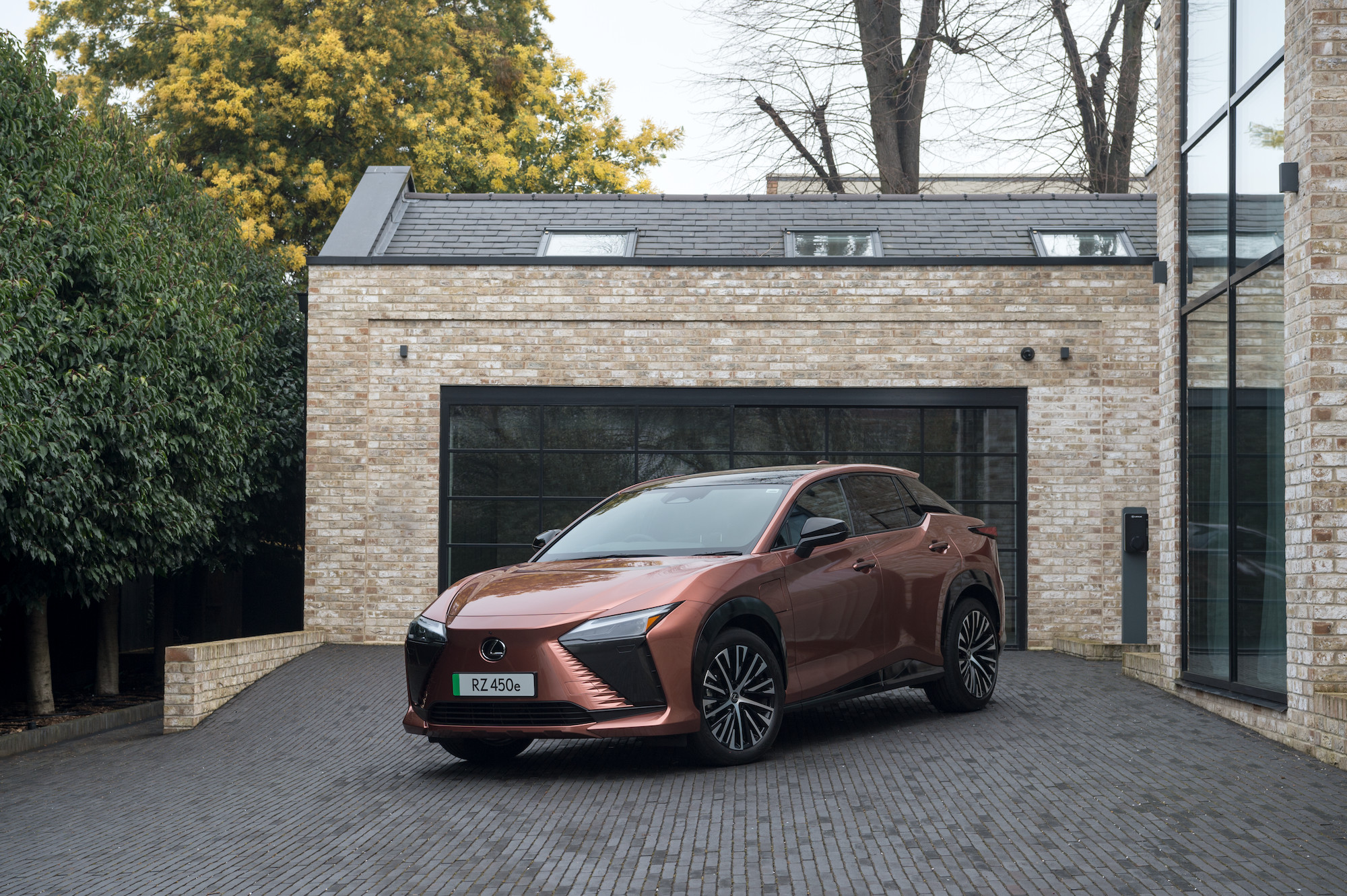
My first experience of the Lexus RZ was at Château La Coste in the South of France. Patrick McKillen’s storied vineyard, arts complex and hotel plays host to the likes of Damien Hirst, Richard Rogers, Oscar Niemeyer, and contemporary artists like Tia-Thuy Nguyen across its 200 hectares.
As a result, it's also increasingly the go-to destination for car companies looking for a perfect blend of culture, hospitality, good roads, clear skies and an excellent wine list. Not long after, Wallpaper* were guests of Rolls-Royce in the same elegant rooms at the Villa la Coste, a selection of suites that nestle into the Provençal hillside, designed by Green + Partners with interiors by André Fu.
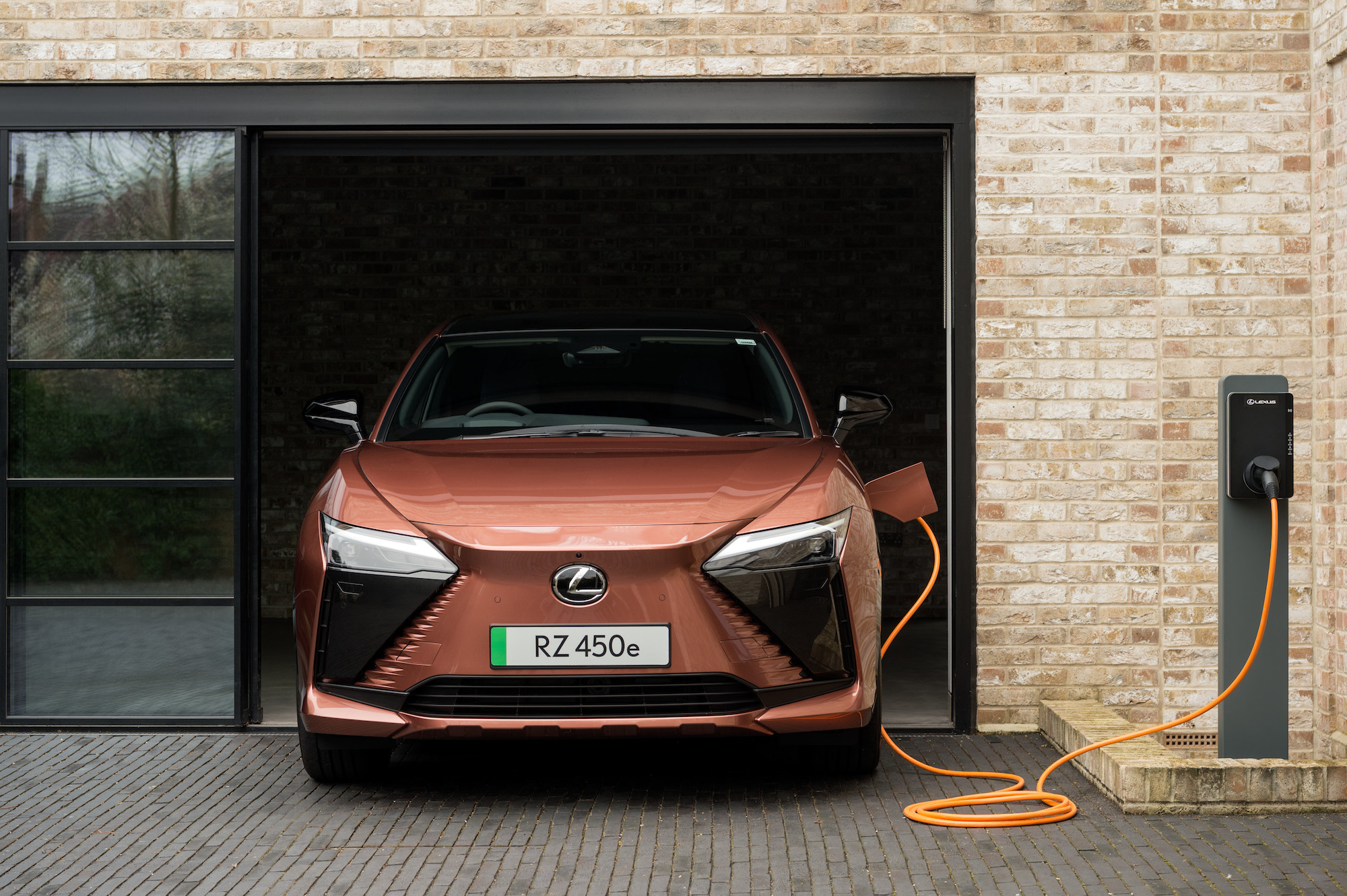
The Lexus RZ 450E
This choice of location explicitly signalled where Lexus considers itself to be in the world of art, architecture and design. Away from all the distractions and diversions, how does the RZ feel in the real world? Eighteen months ago, it the RZ was one of the better blends of electric crossover and SUV, at that time a relatively small outcrop on a fast-changing automotive landscape.
These days, most brands have made the SUV-esque body style their first point of call on the road to electrification. Even the RZ’s finer points – its excellent build quality, famed Lexus reliability and fine attention to detail – are in danger of being usurped by the overall glow-up applied to every new car in an effort to stand out in a crowded, competitive marketplace.
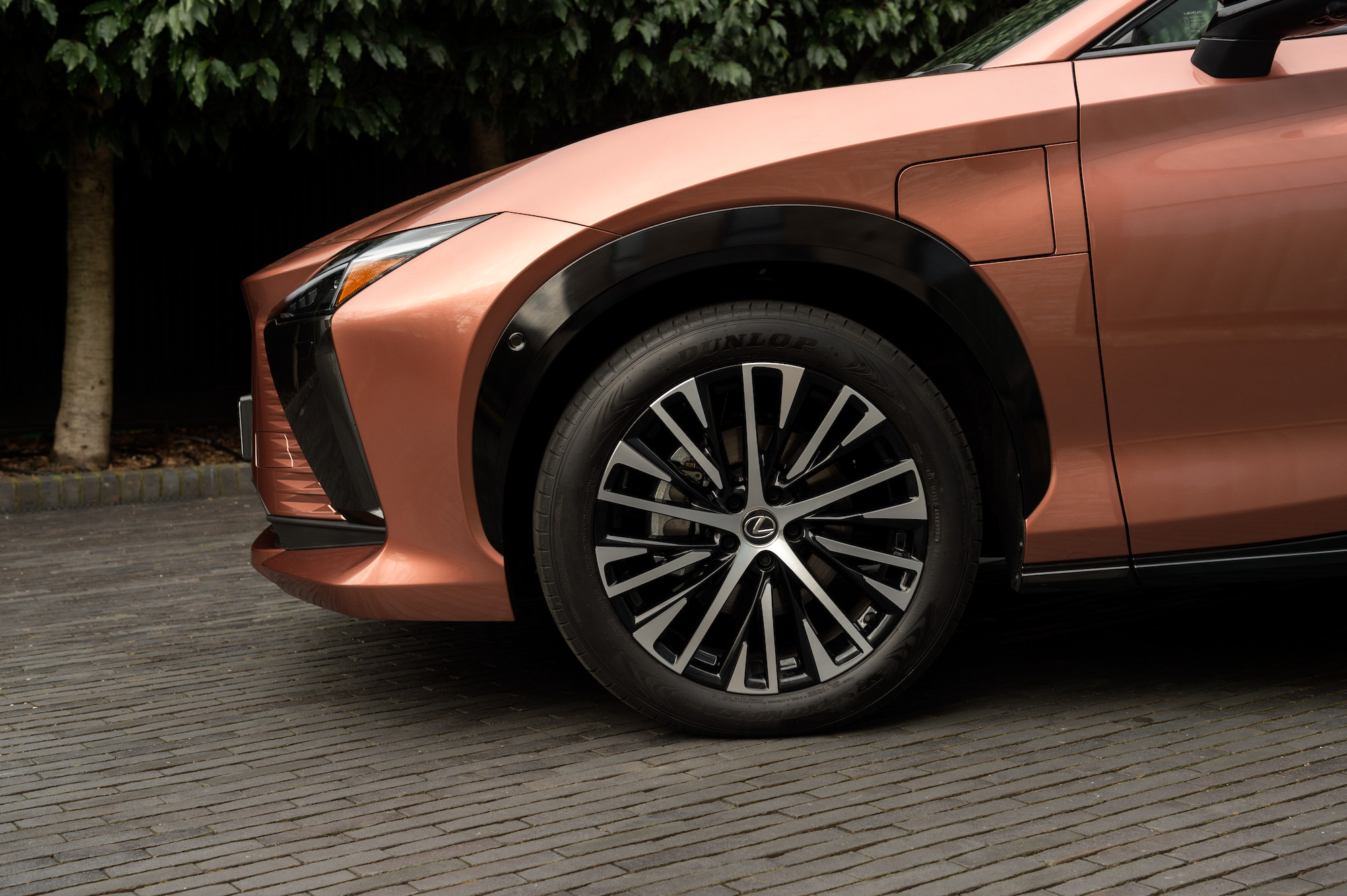
The Lexus RZ 450E
There’s still an element of good value in the Lexus approach, with an impressive equipment spec straight out of the box, unlike many German rivals. Considering that the Audi Q6 e-tron quattro starts where the RZ’s list price finishes, and that’s before you’ve delved into Audi’s well-curated extras list, the Japanese brand still has the advantage.
One element that was missing from the UK-spec car was the steering yoke, a replacement for a conventional wheel that uses Lexus’s One Motion Grip steer-by-wire system. On the open roads of Provence, this was quite easy to get accustomed to, but it would be interesting to see how it fared in London’s tight streets with endless requirements to reverse and park.
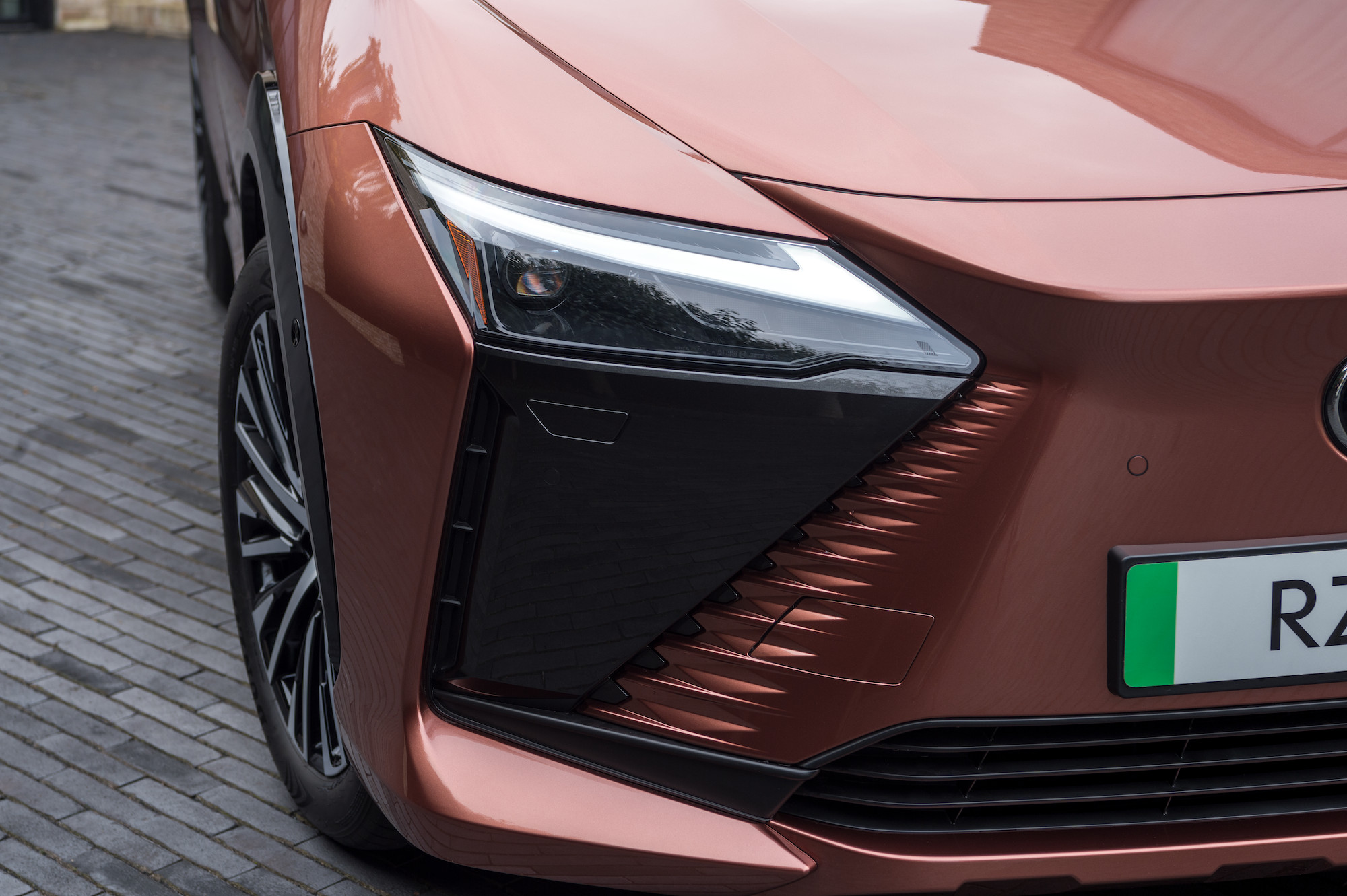
The Lexus RZ 450E doubles down on the brand's design language
On the capital's harried streets, the Lexus was a place of refuge, even if some of the interface choices felt more intrusive the longer you spent time with them (especially the sonic ones). There’s a single monotone bong for every warning, except when parking, and the car erupts in a cacophony of noisy sensors, all trying to shout over one another.
Wallpaper* Newsletter
Receive our daily digest of inspiration, escapism and design stories from around the world direct to your inbox.
You also have to turn off the satnav voice every time you start the car and the speed warning alert is so well buried in the menu system that I never found it. The wide, shallow screen offers relatively sparse mapping and the icon sets lack detail and verve, rather than appearing classy and refined. Despite these quibbles, the primary controls are otherwise good and intuitive, with temperature dials, a volume knob and well-placed power points.
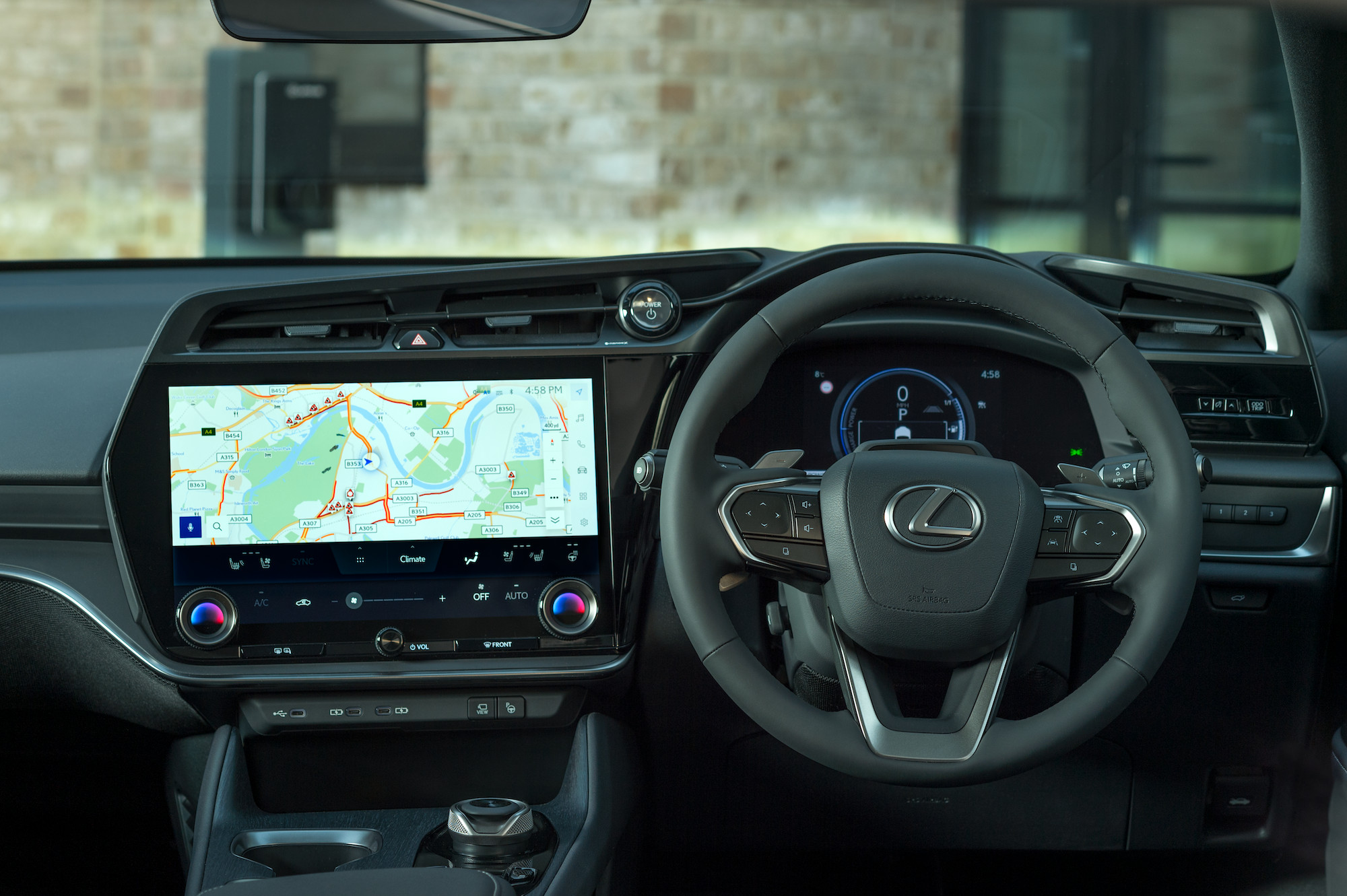
The dashboard of the Lexus RZ 450E
As we previously noted, the RZ’s sister car is the Toyota bZ4X, and the platform and proportions are also deployed on the Subaru Solterra. All are somewhat different, of course, from bodywork to specs to range, but there’s something a little more honest and hard-wearing about the Toyota and Subaru that gets lost in the translation to Lexus.
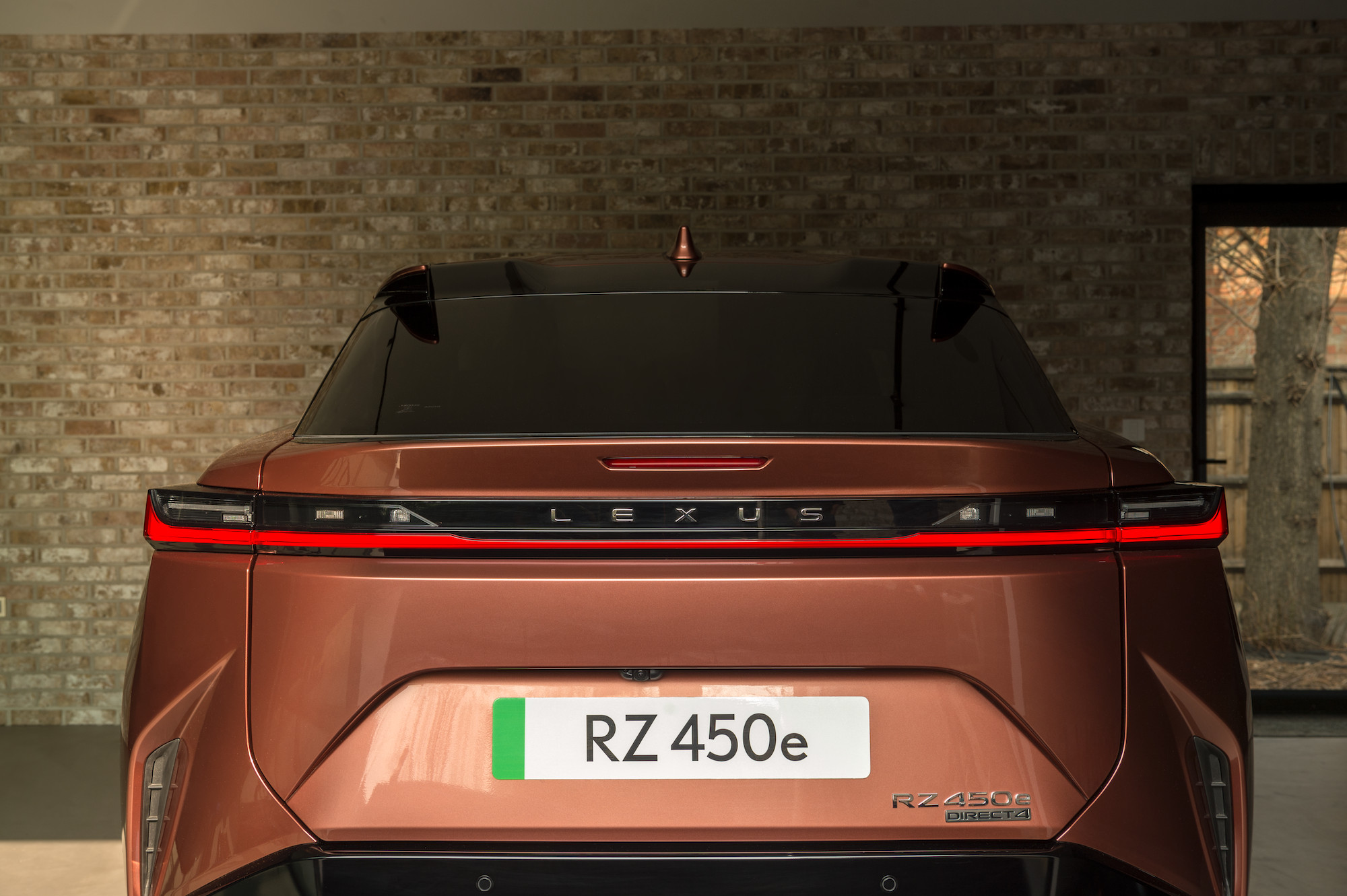
Lexus RZ 450E
Another possible flipside in the transition to city life is the creased and rumpled nature of Lexus’s signature design language. More than once, we did a double-take, with the light falling in just the right way to imply that someone had side-swiped the RZ and left a big dent in it.
Although the RZ is perhaps the best- ever looking Lexus SUV, recent concepts have favoured sleeker, more low-slung futuristic designs like the Lexus LF-ZC and LF-ZL. The house style certainly benefits from these more generous proportions.
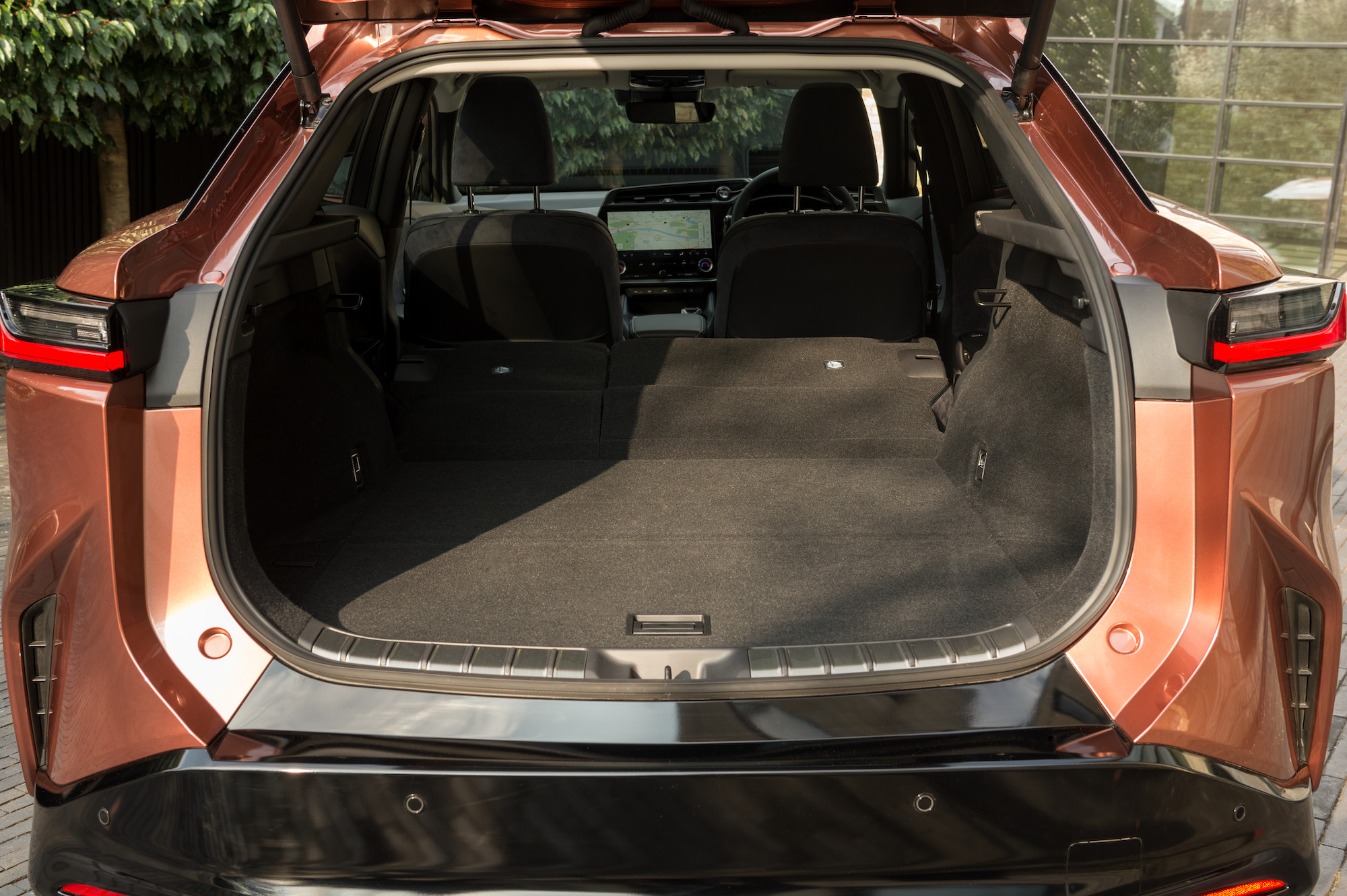
Premium practicality, inside the Lexus RZ 450E
As is so often the case with electric car specs, the more power you pay for, the shorter the range you get. The single-motor RZ 300E goes up against the twin-motor RZ 450E, and although the latter has punchier acceleration, the range varies by as much as 46 miles, with 297 miles being the headline figure for the 300E. Real world conditions can vary wildly. With the 300E we drove, you can get a lot more whoosh by turning on sport mode, but it’s a rather synthetic kind of boost, one that feels programmed and inorganic.
A Lexus is still a fine cocoon from contemporary life, with idiosyncrasies that create true character in comparison to other, more cookie cutter brands. The RZ may have lost a little of the lustre from its launch, but it’s still a cossetting conveyance that could give service for decades.

Lexus RZ 450E
Lexus RZ, from £49,995, all the way up to £66,695 for the RZ 450E Takumi Bi-Tone edition, Lexus.co.uk, @LexusUK
Jonathan Bell has written for Wallpaper* magazine since 1999, covering everything from architecture and transport design to books, tech and graphic design. He is now the magazine’s Transport and Technology Editor. Jonathan has written and edited 15 books, including Concept Car Design, 21st Century House, and The New Modern House. He is also the host of Wallpaper’s first podcast.
-
 Warp Records announces its first event in over a decade at the Barbican
Warp Records announces its first event in over a decade at the Barbican‘A Warp Happening,' landing 14 June, is guaranteed to be an epic day out
By Tianna Williams
-
 Cure your ‘beauty burnout’ with Kindred Black’s artisanal glassware
Cure your ‘beauty burnout’ with Kindred Black’s artisanal glasswareDoes a cure for ‘beauty burnout’ lie in bespoke design? The founders of Kindred Black think so. Here, they talk Wallpaper* through the brand’s latest made-to-order venture
By India Birgitta Jarvis
-
 The UK AIDS Memorial Quilt will be shown at Tate Modern
The UK AIDS Memorial Quilt will be shown at Tate ModernThe 42-panel quilt, which commemorates those affected by HIV and AIDS, will be displayed in Tate Modern’s Turbine Hall in June 2025
By Anna Solomon